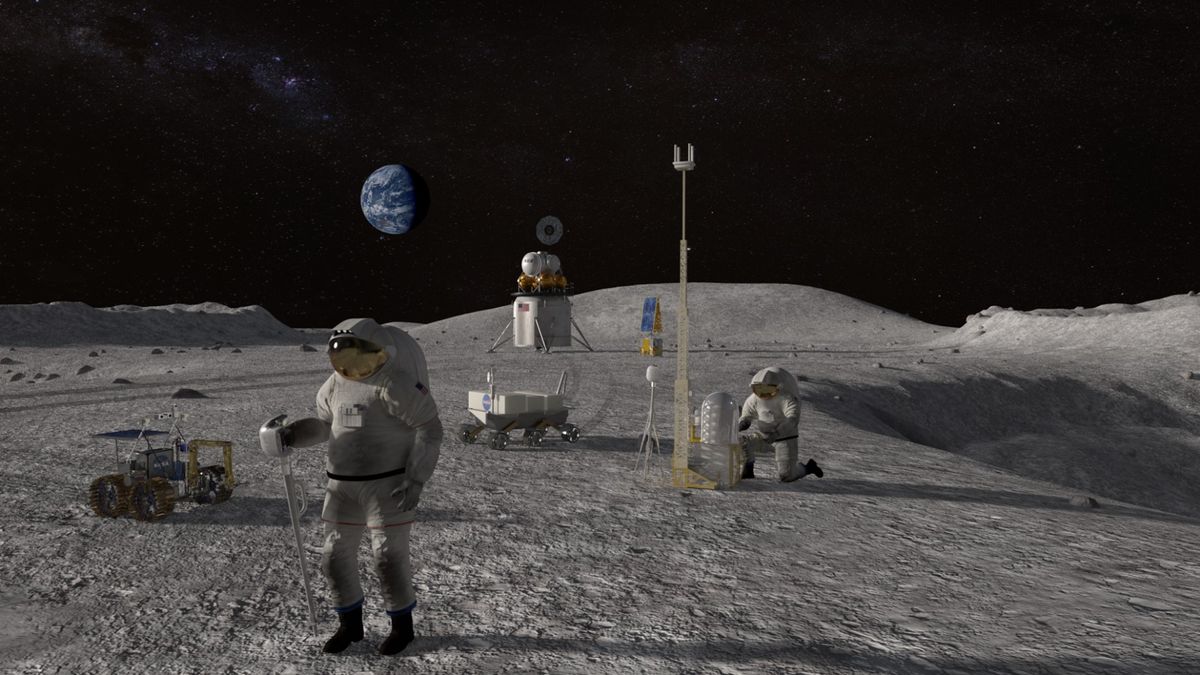
Nearly 70% of the money is earmarked for the management of cryogenic fluids such as liquid hydrogen and liquid oxygen.
For example, Intuitive Machines, which will fly a robotic mission to the lunar surface for NASA next year, snagged nearly $42 million to develop a deployable hopping lander capable of carrying a small payload at least 1.5 miles (2.5 kilometers) on the moon.
The Tipping Point contracts aim to spur potentially transformative technologies "and really get them over the edge," NASA Administrator Jim Bridenstine said today during a presentation at the Lunar Surface Innovation Consortium conference.
NASA's Space Technology Mission Directorate will negotiate with all of the awardees and come up with firm, fixed-price contracts that cover work lasting up to five years, agency officials said.
NASA and industry partners have developed and tested numerous technologies to enable long-term cryogenic fluid management, which is essential for establishing a sustainable presence on the Moon and enabling crewed missions to Mars.
Small-scale flight demonstration of a complete cryogenic oxygen fluid management system.
The small business will collaborate with NASA’s Marshall Space Flight Center in Huntsville, Alabama, NASA’s Glenn Research Center in Cleveland, and NASA’s Kennedy Space Center in Florida.
In-space demonstration mission using liquid hydrogen – the most challenging of the cryogenic propellants – to test more than a dozen cryogenic fluid management technologies, positioning them for infusion into future space systems.
Large-scale flight demonstration to transfer 10 metric tons of cryogenic propellant, specifically liquid oxygen, between tanks on a Starship vehicle.
Demonstration of a smart propulsion cryogenic system, using liquid oxygen and hydrogen, on a Vulcan Centaur upper stage.
As part of NASA’s Lunar Surface Innovation Initiative, the agency invests in technologies needed to advance in-situ resource utilization, surface power generation and energy storage, communications, and more.
The space science and technology evaluation facility will give small experiments access to the lunar environment to collect data and experience exposure to the ultraviolet and charged particle radiation.
Inspired by terrestrial technology, Nokia proposes to deploy the first LTE/4G communications system in space.
Develop demonstration-scale hardware that uses methane and concentrated solar energy to extract oxygen from lunar regolith.
The hardware could be tested on a commercial lunar lander to prove a full-scale production plant's viability using this process.
Suborbital platforms can enable testing of integrated precision landing and hazard avoidance technologies, using lunar trajectories during descent and landing
Masten will mature its Xogdor vehicle to provide researchers from government, academia, and industry with a new platform for testing space technologies